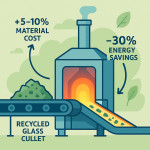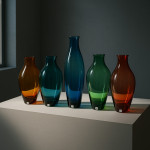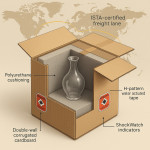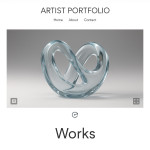Grant proposal secrets for glass innovators: fund experiments without debt
Stop paying for kiln time and color-testing with your credit card. A sharp grant proposal can bankroll your next glass breakthrough without adding a cent of debt. This guide reveals proven steps— from spotting the right funding call to designing a budget that wins juries—so you can spend more time in the hot shop and less time juggling invoices.
Why grants beat loans for experimental glasswork
High-temperature furnaces, specialty cullet, and studio helpers cost serious money. A grant proposal eliminates repayments, protects your cash flow, and signals credibility to galleries and collaborators. Unlike loans, grants:
- Require no collateral—your creative vision is the currency.
- Cover R&D risks that banks avoid, such as one-off material tests.
- Boost visibility: funders promote awardees to their donor networks and media.
Step-by-step blueprint for a winning grant proposal
1. Decode the funder's true goals
Read past recipient lists and annual reports. Does the foundation champion eco-friendly practices? Link your project to greener melt cycles. For inspiration, study material-first approaches like the recycled glass sourcing playbook.
2. Craft a razor-sharp problem statement
Grant panels love specificity. Instead of “I want to explore new colors,” try “Cobalt prices rose 18 % in 2023; I will formulate manganese-based violets to cut cost and emissions.” The phrase grant proposal belongs here—use it while pinpointing the issue so the reviewer connects need and solution instantly.
3. Present measurable objectives
Swap vague hopes for metrics:
- Produce 30 test tiles demonstrating a 10 % weight reduction.
- Publish a process report viewed 500 times via the Artfolio craft-designers hub.
4. Build a funder-friendly timeline
Most panels fear scope creep. Break the schedule into 60-day sprints echoing studio safety practices from studio ventilation and kiln upkeep guides. End every sprint with a tangible artifact—test samples, video demo, or community workshop.
5. Assemble a realistic budget—then trim 10 %
Over-asking can sink even the slickest grant proposal. Cross-reference supplier quotes and volunteer contributions. Cut non-essential line items before submission. The table below helps you compare common funding categories.
| Budget Item | Average % of Total | Reviewer Red Flag? |
|---|---|---|
| Materials & consumables | 35 % | No—essential to outcome |
| Studio rental & utilities | 25 % | Only if above local rates |
| Artist fees | 20 % | No—shows professional practice |
| Outreach & documentation | 10 % | Yes if missing—impact matters |
| Contingency | 10 % | Cap at 10 % or less |
6. Prove capability with lean storytelling
Weave three proof points: past exhibitions, technical milestones, and partnerships. Link to process notes techniques from clear storytelling for glass projects to show evaluators that you document progress clearly.
7. Embed community impact
Community clauses often tip decisions. Offer an open-studio demo or free webinar on safe packaging (see fragile-no-more packaging specs) to share knowledge beyond your bench.
8. Edit for clarity and compliance
Use active voice, stick to word limits, and triple-check attachment names. Each grant proposal disqualified for formatting errors frees budget for someone else—keep your chance alive.
Common pitfalls and how to avoid them
- Copy-paste syndrome: Reviewers spot recycled text. Tailor every grant proposal to the call.
- Hidden personal debt: Asking for loan repayments breaks eligibility rules. Fund experiments, not past bills.
- Overly technical jargon: If a non-glass specialist can't grasp your need in 30 seconds, simplify.
- Missing risk plan: Outline how you will adapt if a test batch fails—funders love contingency thinking.
Grant proposal checklist
- Download guidelines and highlight all mandatory sections.
- Draft a one-sentence project elevator pitch.
- Collect supplier quotes and volunteer letters early.
- Write objectives using SMART format (Specific, Measurable, Achievable, Relevant, Time-bound).
- Proofread with a peer—fresh eyes catch jargon and typos.
- Submit 48 hours before deadline to dodge server crashes.
Case example: funding a limited-edition glass run
Studio Blazon wanted to test iridescent overlays but lacked funds for rare metals. They:
- Referenced scarcity tactics in limited-edition glass run strategies to justify market demand.
- Filed a grant proposal to the Emerging Maker Fund, requesting €11 000.
- Allocated 15 % of the budget to share a virtual exhibit, boosting funder visibility.
Result: 8-week review cycle, full funding, and a sold-out drop within four months—without a single loan.
Mini-quiz: Are you grant-ready?
FAQ
- How many grants should I apply for at once?
- Submit two to three well-targeted applications per quarter. Quality beats mass submissions.
- Can I pay myself in the grant budget?
- Yes. A fair artist fee (15–25 % of total) proves sustainability and is rarely questioned.
- What documents usually accompany a grant proposal?
- CV, project timeline, itemised budget, sample images, and letters of support. Check each call for extras.
- Do small studios stand a chance against large institutions?
- Absolutely. Panels value innovation and clear impact over footprint size—concise grant proposals often outshine institutional jargon.
Take action today

Your next color series or structural experiment is just one compelling grant proposal away from full funding. Download the call, follow the blueprint above, and hit “submit” before opportunity cools. When your furnace fires on someone else's dime, you'll be glad you started now.











